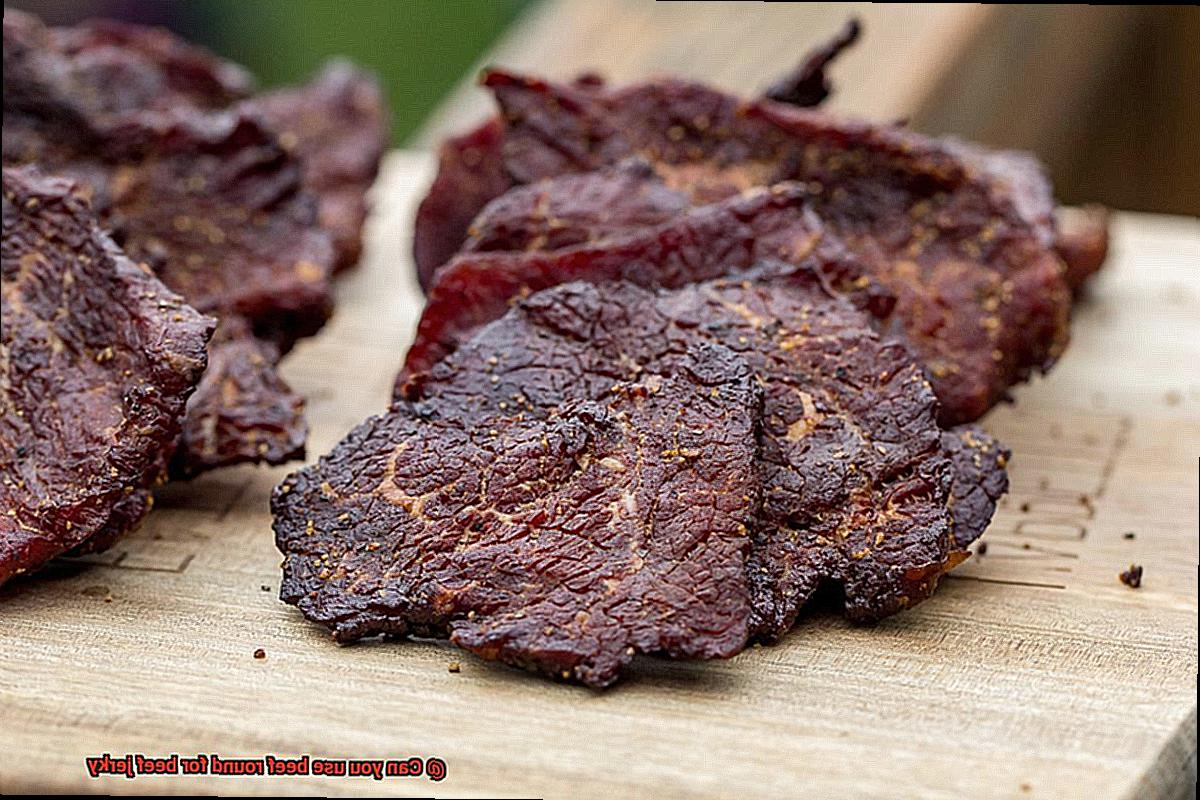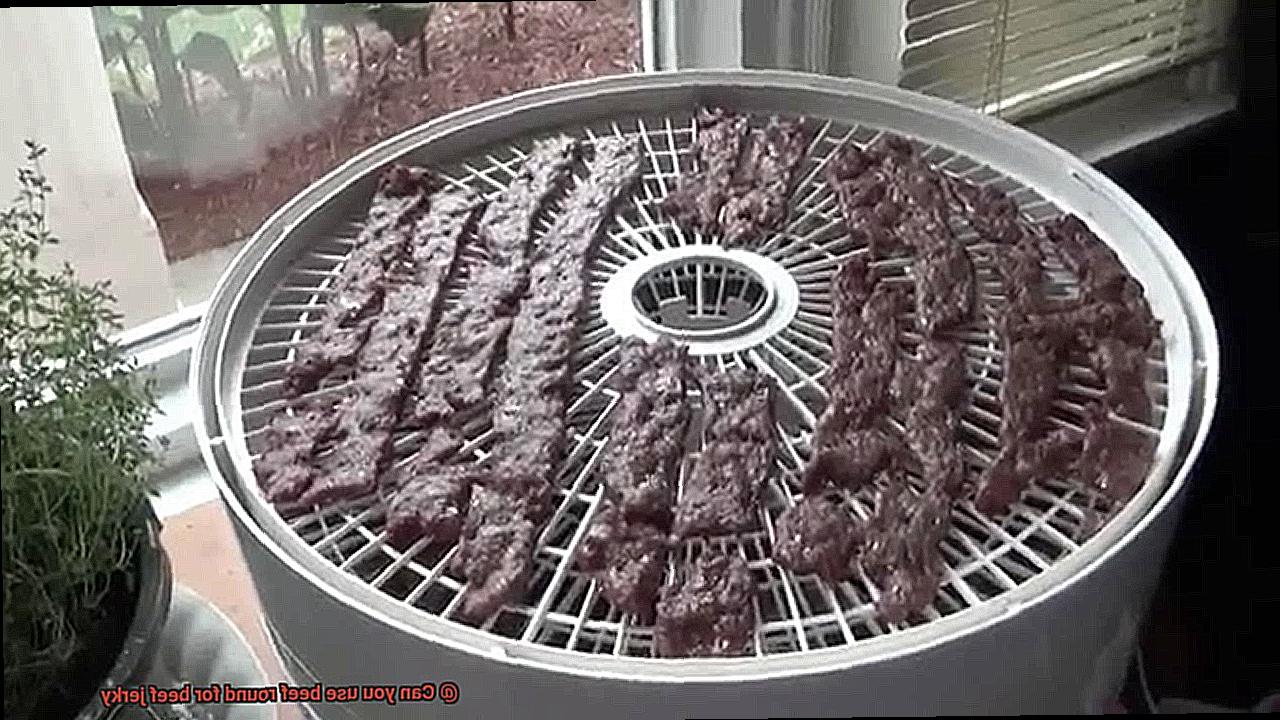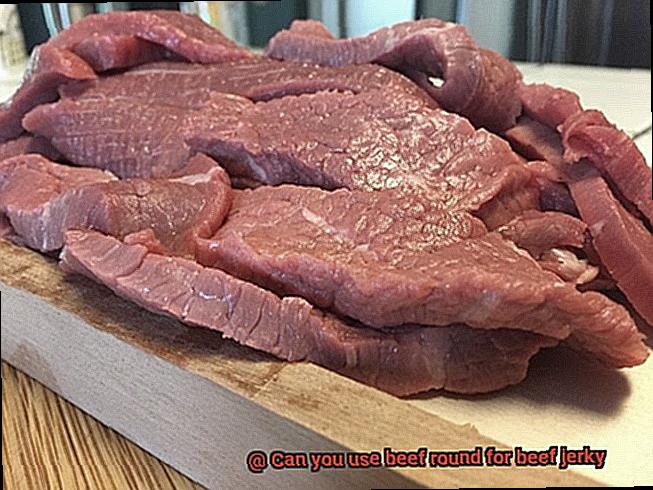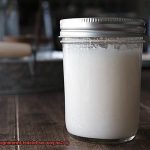Do you crave the savory, chewy goodness of beef jerky? If so, you might be wondering which cut of meat is best for this popular snack. Fear not, my fellow jerky enthusiasts. Today, we’re going to tackle a question that often arises in beef jerky circles: Can you use beef round for beef jerky?
Beef jerky has been a beloved treat for centuries. It’s a protein-packed snack that’s perfect for hiking, camping, or satisfying your mid-day cravings. But with so many cuts of beef available, it can be tough to know which one will yield the tastiest results.
The debate over using beef round for beef jerky is an interesting one. Some swear by it, while others say it falls short. In this blog post, we’ll take a closer look at the characteristics of beef round and how it stacks up against other cuts when it comes to making delicious jerky.
We’ll explore why beef round can be a great option, as well as any potential drawbacks to consider. Plus, we’ll delve into some common mistakes made when preparing this cut for jerky and offer insider tips and tricks to ensure your batch turns out perfectly every time. So let’s dig in and finally answer the age-old question: Can you use beef round for beef jerky?
Contents
What is Beef Round?
Beef round may not be the most glamorous cut of beef, but it’s a versatile and lean option that can be used in a variety of dishes and cooking methods. As an expert in the world of beef, I’m often asked about beef round and its sub-primal cuts. Let’s dive in and explore what beef round is all about.
At its core, beef round is the rear leg of a cow that contains the round primal cut. This cut is typically leaner than other cuts, making it a healthy option for those looking to reduce their fat intake. However, it can also be tougher if not prepared correctly. That being said, beef round is still a versatile cut that can be used for roasting, braising, and even making beef jerky.
The round primal cut can be further divided into three sub-primal cuts: top round, bottom round, and eye of round. Each sub-primal cut has its unique characteristics and uses. Top round is the most tender and leanest of the three, making it great for roasting or even slicing thin for sandwiches. Bottom round is slightly tougher but still tender enough for slow cooking methods like pot roast or stews. Eye of round is the toughest of the three and is best used for slow cooking methods like braising or pot roast.

Now, let’s talk about using beef round for jerky. Although it may not be the ideal cut due to its low-fat content, it can still be used if prepared correctly. To make tender and flavorful beef jerky from beef round, it’s crucial to slice the meat thinly against the grain. This helps break down the muscle fibers and make them easier to chew. Marinating the meat in a flavorful mixture before dehydrating can also help tenderize and add flavor to the meat.
It’s important to note that using a higher-fat cut like brisket or flank steak will result in a more tender and flavorful jerky. But if you’re looking for a leaner option, beef round can be a good choice. Just make sure to slice it thinly against the grain and marinate it in a flavorful mixture before dehydrating.
Benefits of Using Beef Round for Jerky
If you’re looking to make beef jerky at home, it’s important to choose the right cut of meat. And when it comes to lean, affordable, and versatile options, beef round is a top contender.
First and foremost, the low-fat content of beef round makes it an ideal choice for health-conscious individuals. You can indulge in the delicious flavor of jerky without worrying about consuming too much fat. Plus, since beef round is relatively inexpensive, you can make a big batch without breaking the bank.

But that’s not all – beef round also has a texture that’s perfect for jerky. Its firmness and chewiness allow it to withstand the drying process, which can be a challenge with other cuts of meat. This means that every bite of your finished jerky will have that satisfyingly chewy texture.
Of course, flavor is just as important as texture when it comes to jerky. Fortunately, beef round has a mild taste that easily absorbs marinades and spices. This means that you can experiment with different flavor combinations and create unique jerky recipes that cater to your taste buds.
And let’s not forget about accessibility – beef round is a cut of meat that you can easily find at most grocery stores and butcher shops. This makes it a convenient option for anyone who wants to try their hand at making homemade jerky.
In summary, using beef round for jerky offers numerous benefits that make it an excellent choice for anyone looking to make delicious and healthy jerky at home. To recap:
- Low-fat content for a healthier option
- Firm and chewy texture for a satisfying bite
- Mild flavor that readily absorbs marinades and spices
- Accessibility at most grocery stores and butcher shops
Preparing Beef Round for Jerky
As a seasoned expert in the field, let me guide you through the essential steps to create mouth-watering and flavorful jerky.
First, let’s start with the star of the show: beef round. This lean and affordable cut of meat from the rear leg of the cow is perfect for jerky as it has little fat and can withstand the drying process. However, to create the best beef jerky, proper preparation is key.
Begin by trimming any excess fat off your beef round with a sharp knife. This step will prevent spoilage and extend your jerky’s shelf life. Then, slice the beef round into thin strips against the grain of the meat. By cutting against the grain, you’ll make your jerky tender and easier to chew.
Now onto the crucial step of marinating. A good marinade will add flavor and tenderness to your jerky. There are endless marinade recipes available, but a classic blend of soy sauce, Worcestershire sauce, garlic powder, onion powder, and black pepper is a great starting point. For adventurous foodies, try adding liquid smoke or other seasonings for added depth of flavor.
Once your marinade is ready, place your sliced beef round into a large resealable plastic bag and pour the marinade over it. Seal the bag and refrigerate for at least 4 hours or overnight. The longer you marinate your meat, the more flavorful and tender it will become.
When it’s time to dry your beef round into jerky, remove it from the marinade and pat it dry with paper towels. Place your strips on a wire rack or dehydrator tray, leaving some space between each piece for air circulation. Then dry the jerky in a food dehydrator or oven at a low temperature (around 140-160°F) until it’s dry and chewy.
Marinades and Seasonings to Consider
When it comes to beef jerky, it’s all about the marinade and seasoning. Not only does it add flavor to the meat, but it also plays a crucial role in the preservation process. The right marinade helps to break down the proteins in the meat, while the perfect seasoning adds an extra layer of flavor.
When using beef round – a lean and affordable cut of meat that comes from the rear leg of the cow – there are some tried-and-true options that are sure to impress your taste buds. Let’s explore some of the best marinades and seasonings for beef round.
First up, there’s the classic soy sauce-based marinade. It’s a crowd-pleaser for good reason – soy sauce provides a savory, umami flavor that pairs perfectly with beef. To make this mouth-watering marinade, combine soy sauce, Worcestershire sauce, brown sugar, garlic powder, onion powder, and black pepper. Let the beef round soak in this delicious mixture for at least 4 hours (or overnight if you have the time) before dehydrating.
If you’re looking for something a little simpler, you can’t go wrong with a salt and pepper seasoning. This allows the natural flavor of the beef to shine through while still adding some depth of flavor. Just sprinkle salt and pepper over the beef before dehydrating and you’re good to go.
For those who like to add some spice to their lives, a chili powder-based seasoning is definitely worth considering. Mix together chili powder, cumin, garlic powder, onion powder, salt, and sugar for a flavorful blend that will give your taste buds a kick. Rub this seasoning onto the beef before dehydrating for maximum flavor.
In addition to these three options, there are many other marinades and seasonings that work well with beef round. Here are some additional ideas:
- Teriyaki marinade: Combine soy sauce, brown sugar, garlic powder, ginger, and pineapple juice for a sweet and savory marinade that’s perfect for beef round.
- Cajun seasoning: Mix together paprika, cayenne pepper, garlic powder, onion powder, thyme, oregano, salt, and black pepper for a spicy and flavorful seasoning.
- BBQ sauce: Brush your beef round with your favorite BBQ sauce before dehydrating for a smoky and tangy flavor.
Drying Time for Beef Round Jerky
If you want to create mouth-watering, healthy jerky that everyone will love, it all comes down to paying attention to the details.
One critical factor that impacts the drying time is the thickness of your beef slices. Thinly sliced beef will dry faster than thicker slices, so aim for slices that are around 1/8 to 1/4 inch thick. This ensures that your jerky won’t be overcooked or undercooked and will have just the right chewiness.
Another crucial factor in determining the drying time is humidity. High humidity can slow down the drying process and increase the risk of spoilage, so make sure to dry your jerky in an environment with a relative humidity level of 40-60%. If you live in a humid climate, using a dehumidifier or air conditioning can help regulate the humidity level and speed up the drying process.
Temperature also plays a significant role in drying beef round jerky. The ideal temperature range for drying beef jerky is between 130-160°F. At this temperature range, harmful bacteria cannot survive, and the meat will dry out without cooking or becoming too brittle. If you’re using an oven or dehydrator, make sure to follow the manufacturer’s instructions regarding temperature settings.
Tips for Making Delicious Beef Round Jerky
Beef round is a popular choice among many jerky makers due to its lean texture and minimal fat content. However, making delicious beef round jerky requires some extra attention to detail. Here are some tips to help you create the perfect batch:
Choose the right cut of beef round
Look for cuts that are lean and have minimal fat content. For the best results, choose cuts with less than 10% fat content. This will ensure that your jerky turns out tender and flavorful.
Slice the meat thinly against the grain
To achieve the perfect texture, it’s important to slice the meat thinly against the grain. This will help break down the muscle fibers and make it easier to chew. The ideal thickness for beef jerky is around 1/8th of an inch.
Marinate the meat properly
To infuse your beef round with flavor, marinate it for at least 12 hours in the refrigerator before dehydrating. A combination of acidic and savory ingredients like soy sauce, Worcestershire sauce, apple cider vinegar, and honey can create a delicious marinade.
Dehydrate at a low temperature
To avoid overcooking or drying out your jerky, dehydrate it at a low temperature between 130-140 degrees Fahrenheit. This will ensure that your beef round jerky dries evenly without becoming tough or brittle.
Check on the jerky periodically
It’s important to check on your jerky throughout the drying process to make sure it’s not over-drying or becoming too brittle. You want to achieve a chewy, tender texture that’s packed with flavor.
Troubleshooting Common Issues with Beef Round Jerky
Fear not, as these common issues can easily be fixed with some simple troubleshooting techniques.
One problem that often plagues beef round jerky is its texture being too tough or chewy. This can be due to factors such as not marinating the meat long enough, slicing it too thickly or against the grain, or forgetting to use a tenderizing tool before marinating. To remedy this issue, try marinating the meat for longer periods of time, slicing it thinner and against the grain, and using a meat tenderizer to break down the tough fibers.
Another issue is beef round jerky being too dry or overcooked. This can be caused by leaving the meat in the dehydrator or oven for too long, using too high of a temperature, or not properly monitoring the cooking process. To fix this issue, keep a close eye on your jerky while it’s cooking and adjust the temperature and cooking time accordingly.
Lastly, some people may find their beef round jerky has a strong gamey flavor. This could result from using older or lower quality meat, not properly trimming off excess fat and connective tissue, or using too much seasoning. To solve this problem, try using fresher and higher quality meat, properly trimming off excess fat and connective tissue, and using less seasoning.
To summarize these troubleshooting techniques:
- For tough or chewy jerky: marinate longer, slice thinner and against the grain, use a tenderizing tool
- For dry or overcooked jerky: monitor cooking closely, adjust temperature and cooking time
- For gamey flavored jerky: use fresher and higher quality meat, trim off excess fat and connective tissue, use less seasoning.
eTTiOr53CeE” >
Conclusion
In conclusion, beef jerky is a timeless snack that has stood the test of time. And when it comes to selecting the perfect cut of meat for making beef jerky, the debate over using beef round is certainly an interesting one. While it may not be the go-to choice due to its low-fat content, it can still be used to make delicious and healthy jerky if prepared correctly.
When using beef round for jerky, there are numerous benefits that make it a top contender. Its low-fat content makes it an ideal choice for health-conscious individuals, while its firm and chewy texture allows it to withstand the drying process with ease. Additionally, beef round has a mild taste that easily absorbs marinades and spices, making it an incredibly versatile option.
But how do you create mouth-watering and flavorful beef round jerky? Proper preparation is key. This includes selecting the right cut of beef round, slicing the meat thinly against the grain, marinating it properly in a flavorful mixture before dehydrating at a low temperature. It’s also important to check on your jerky periodically throughout the drying process to ensure that it doesn’t become too tough or dry.
By following these tips and troubleshooting common issues like tough or chewy texture or dryness, you can create perfect batches of delicious and healthy beef round jerky every time.






